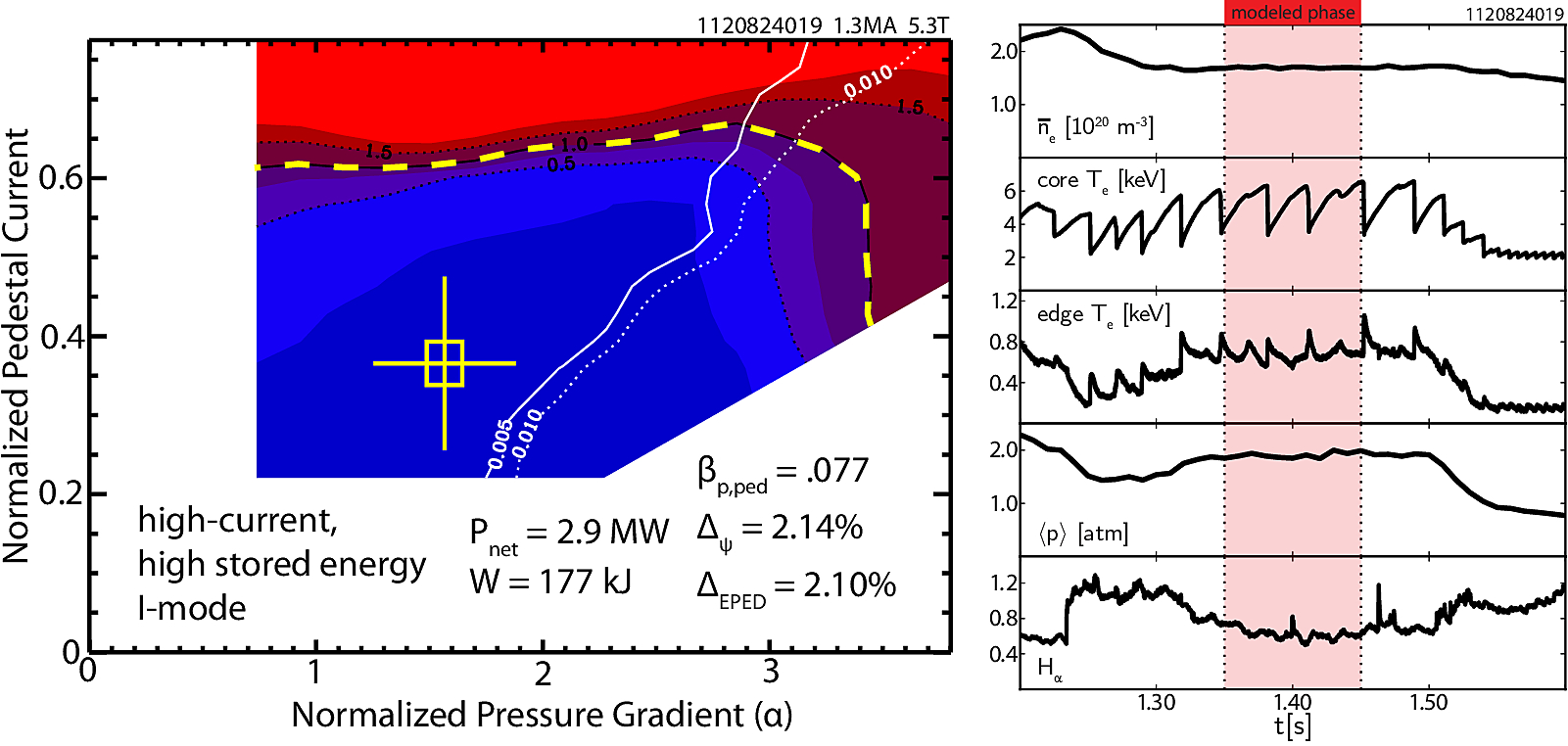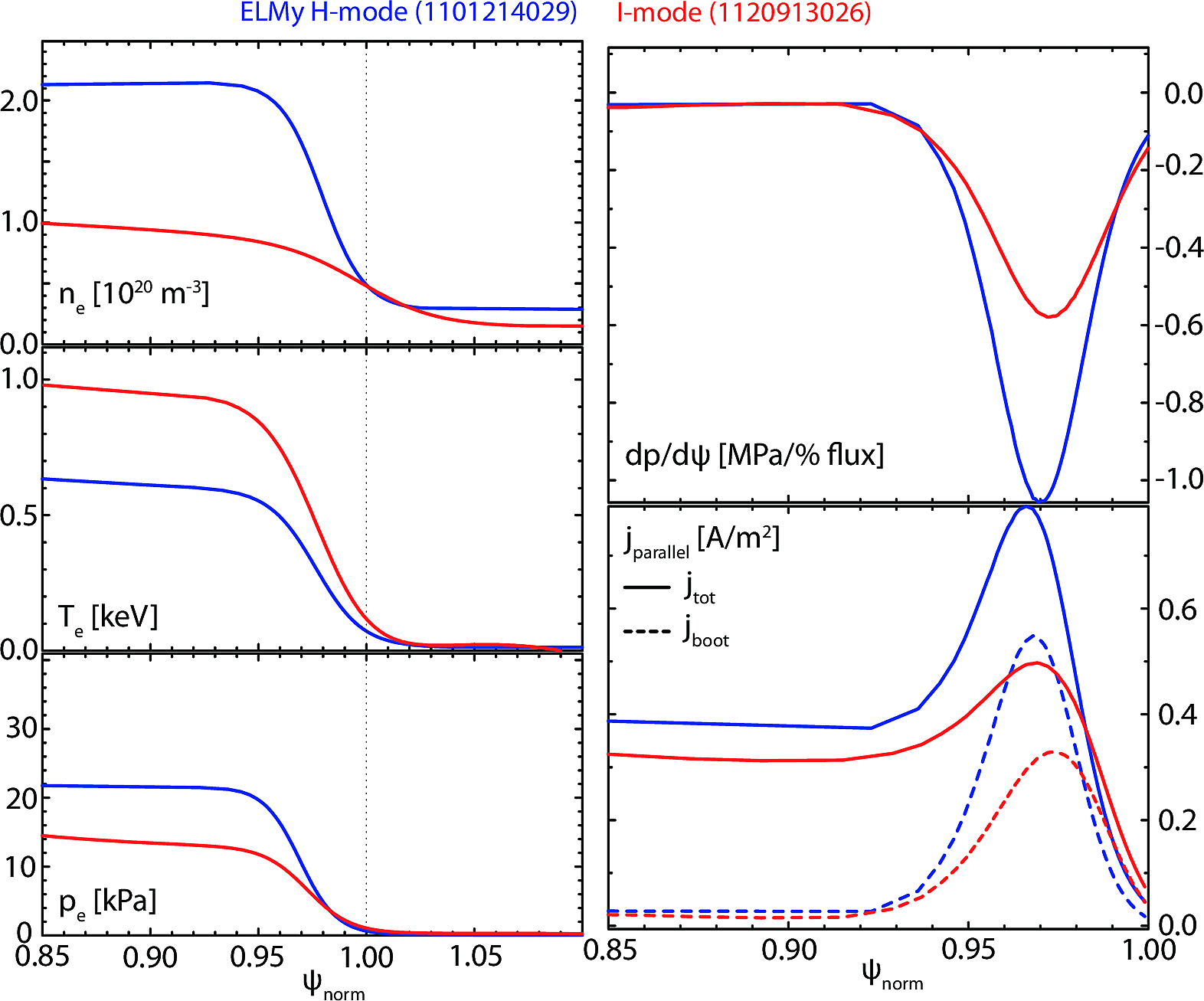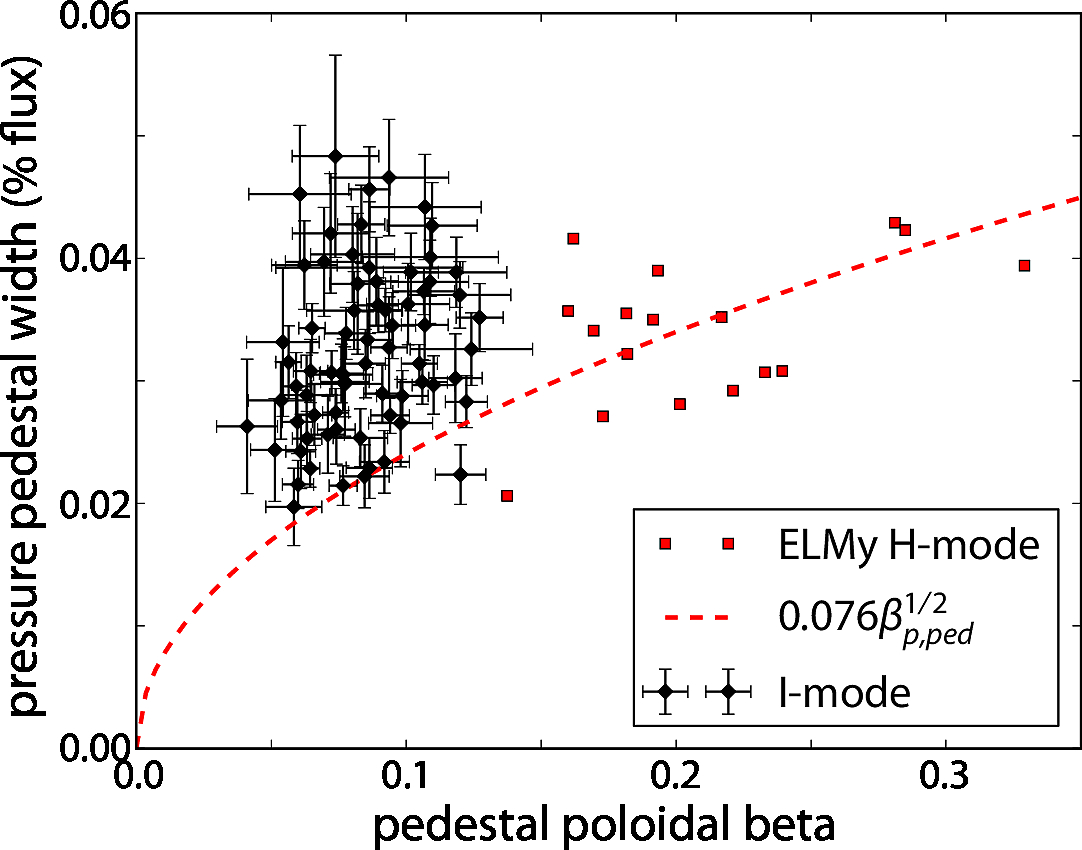John Walk
I-Mode Stability Modeling (doctoral thesis)
John Walk
The I-mode presents a number of attractive properties for a tokamak reactor scenario, notably good performance with minimal impurity retention, and an apparent natural lack of large ELMs.
As part of my doctoral thesis, and coupled with my experimental work in characterizing the I-mode pedestal, I carried out a dedicated computational study of the stability of the I-mode pedestal against known ELM triggers, using the tools and techniques developed for my previous study in ELMy H-mode.
The I-mode pedestal is consistently computationally modeled to be strongly stable to both the peeling-ballooning MHD instability and kinetic-ballooning (KBM) turbulence associated with the ELM trigger, far from the stability boundary (cf. the ELITE result for ELMy H-mode), even in the highest-performance cases, consistent with a lack of ELMs.

This stability is intuitive, in light of the pedestal dynamics in I-mode - due to the relaxed density profile in the pedestal, the total pressure gradient is reduced in I-mode compared to H-mode, as is the edge current density (largely due to self-generated “bootstrap current” that appears in tokamaks, driven largely by strong density gradients). Thus, the I-mode pedestal is backed off from both the ballooning and the peeling MHD instability drives.

The I-mode pedestal width is also evidently not limited by KBM turbulence. The pedestal width is consistently broader (thus more stable) than would be predicted for a given pressure by the KBM limit, and shows no systematic trend with (normalized) pedestal pressure, as would be expected for width-limiting KBM turbulence.
